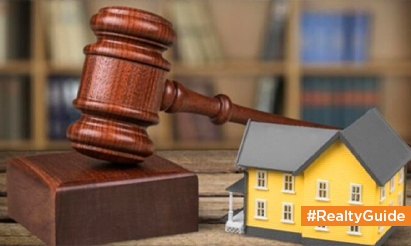Unraveling the Deed of Reconveyance in India: Significance and Meaning!
In the intricate realm of real estate transactions, certain legal documents play a pivotal role in defining property ownership and financial obligations. One such document that holds significant importance, especially in the context of mortgages, is the Deed of Reconveyance.
Understanding the Deed of Reconveyance:
The Deed of Reconveyance is a legal document that serves a crucial purpose in the process of property transfer, particularly when a mortgage has been fully repaid. It is a document that essentially releases the title or deed of trust held by a lender (usually a bank or financial institution) back to the borrower once the mortgage has been paid off in full.
Key Components of a Deed of Reconveyance:
- Identification of Parties: The document typically begins with a clear identification of the parties involved – the borrower (trustor), the lender (beneficiary), and the trustee. The trustee, often an independent third party, holds the title to the property until the mortgage is paid off.
- Property Details: The Deed of Reconveyance provides detailed information about the property in question. This includes the legal description, address, and any other relevant details that establish the identity of the property.
- Loan Repayment Confirmation: One of the primary functions of the Deed of Reconveyance is to confirm that the borrower has successfully repaid the loan or mortgage in full. This is a critical element as it triggers the release of the property title from the lender to the borrower.
- Release of Lien: The document explicitly states that the lender is releasing any liens or claims they may have had on the property due to the mortgage. This is a crucial aspect, as it ensures that the borrower now has clear and unencumbered ownership of the property.
- Notary Acknowledgment: To add legal validity, the Deed of Reconveyance includes a section where the document is acknowledged by a notary public. This helps in the formalization of the release of the property title.
Significance of the Deed of Reconveyance:
- Clearing Title Issues: The Deed of Reconveyance plays a pivotal role in clearing any clouds on the title of the property. Once the mortgage is paid off, this document ensures that the property title is free from any encumbrances or claims by the lender.
- Ownership Confirmation: It serves as a confirmation of the borrower’s full repayment of the mortgage and, subsequently, the transfer of complete ownership rights back to the borrower.
- Mortgage Closure: The execution of the Deed of Reconveyance signifies the formal closure of the mortgage agreement. It is a tangible legal acknowledgment that the borrower has fulfilled their financial obligations, and the lender has released its interest in the property.
- Property Sale or Transfer: In cases where the property is to be sold or transferred, having a clear and executed Deed of Reconveyance is essential. Prospective buyers or new lenders will want assurance that the property’s title is unencumbered.
The Deed of Reconveyance stands as a crucial document in the final chapters of a real estate transaction involving a mortgage. It signifies the culmination of financial obligations, the restoration of complete property ownership to the borrower, and the removal of any liens or claims by the lender. Understanding the significance of this document is imperative for both borrowers and lenders, as it marks the successful conclusion of a mortgage journey and ensures the unencumbered transfer of property rights.
Disclaimer: The views expressed above are for informational purposes only based on industry reports and related news stories. PropertyPistol does not guarantee the accuracy, completeness, or reliability of the information and shall not be held responsible for any action taken based on the published information.




